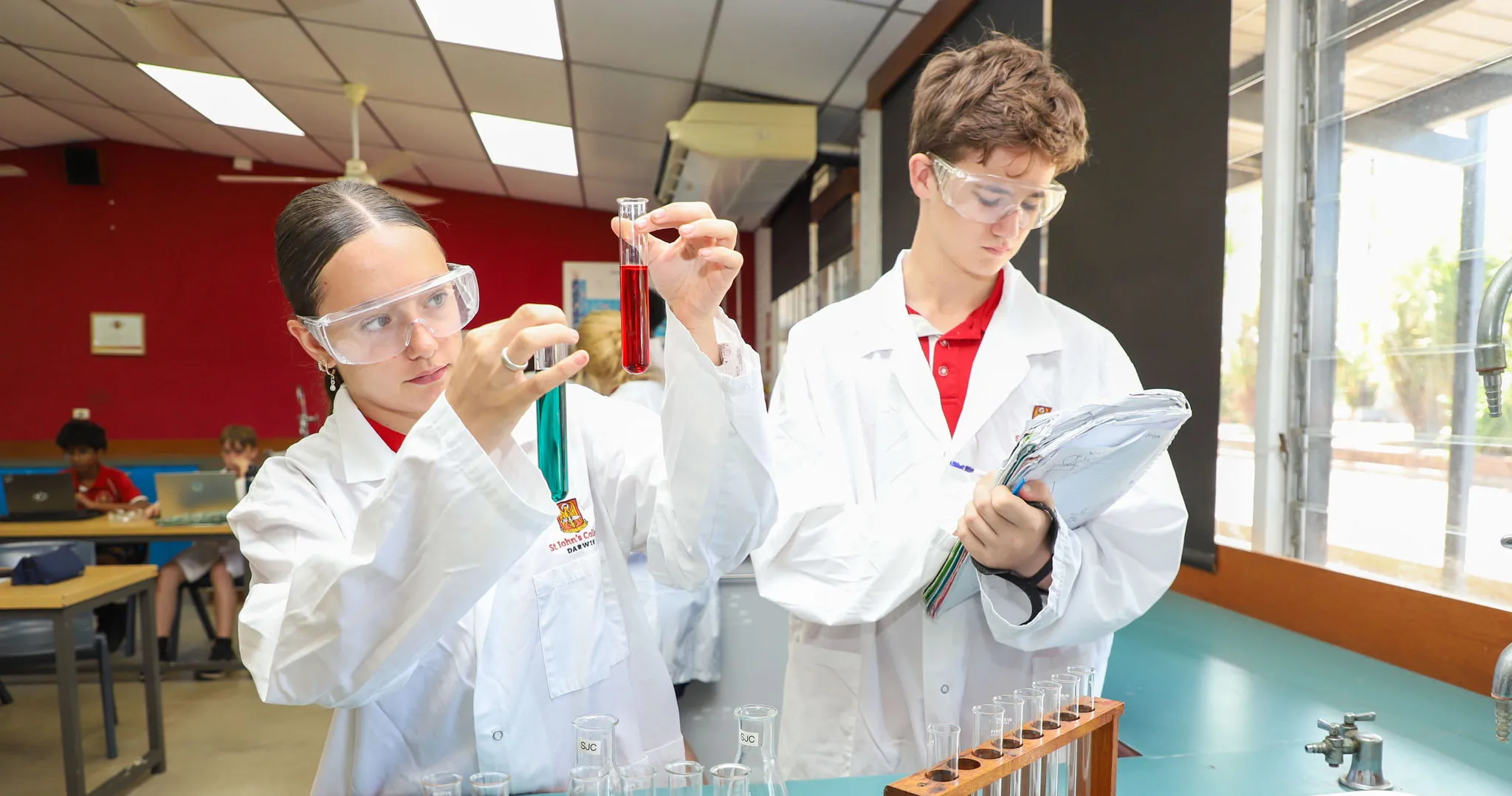
Teaching and Learning Years 7-9
Curriculum
The Year 7 - 9 curriculum is drawn from the Journey in Faith program (Religious Education) and the Australian Curriculum (all other subjects).
Core Subjects:
Year 7 - 9 students study:
- Religious Education
- English
- Mathematics
- Science
- History (one semester) and Geography (one semester)
- *Health and Physical Education
*Core subject timetabled on an elective line
Targeted Placement:
Core subjects are studied in year levels with classes determined by Targeted Placement, which refers to the grouping of students in classes based on academic levels to better cater for their learning needs. This provides students with the opportunity to receive support and/or extension learning, depending on their progress.
Assessment and Reporting:
SEQTA is the primary mode for communicating academic results. Parents / Carers are expected to regularly monitor their child’s academic progress throughout the semester as assessment items are marked.
Elective Subjects:
Students in Years 7 - 9 undertake two electives per semester from a range of options, including:
- Food and Hospitality
- Art
- Drama
- Dance
- Design
- Music
- Digital Technologies
- Business Innovation
- Accounting & Economics
- Legal Studies
- Chess
- Textiles
- Sport & Recreation: Basketball Academy
- Sport & Recreation: Soccer Academy
- Sport & Recreation: Volleyball Academy
- LOTE: Indonesian
Electives are studied in vertical classes (Years 7 - 9) and are determined by a subject selection process each semester.
Electives are subject to teacher availability and student interest.
Standardised Testing:
St John’s participates in the national assessment plan literacy and numeracy (NAPLAN), as well as the ACER’s progressive assessment tests to collect data to inform teaching and
learning.
Pedagogy:
Teaching and Learning is guided by our School Wide Pedagogy (SWP) and encompasses: high expectations of students, higher order thinking skills and academic rigour. Our SWP includes the following phases: direct instruction, practising and deepening (modelling and scaffolding), application of knowledge and skills (higher order thinking skills and problem-based learning).
Religious Education Curriculum:
Based on the South Australian Religious Education Framework, Journey in Faith, is the Religious Education Curriculum for students in Years 7 – 9. Drawing on the sources of our faith; creation, scripture, tradition and human experience, Journey in Faith provides a way of seeing the world, acting in it and of responding to it, all drawn from the simple reality of our faith: God loves us and calls us to life in full abundance. Journey in Faith is constructed around five key learning areas: God, Us and Faith, Sacred Text, Prayer and Sacramentality, Moral Life, and Church for the World. In addition, students undertake units from the Made in the Image of God (MITIOG) human sexuality curriculum.

The Australian Curriculum - Version 9.0:
The Australian Curriculum is a national curriculum framework that sets out the core knowledge, understanding, skills, and capabilities that all Australian students should develop from Kindergarten to Year 12. It was first introduced in 2010 and is regularly reviewed and updated to ensure it remains relevant and responsive to the changing needs of students and society. The curriculum is organized around three key dimensions: learning areas, general capabilities, and cross-curriculum priorities.
| Learning Areas | General Capabilities | Cross-Curriculum Priorities |
| Disciplinary knowledge, skills and understanding are described in the eight learning areas of the Australian Curriculum. |
Students develop capability when they apply knowledge and skills confidently, effectively and appropriately in complex and changing circumstances, in their learning at school and in their lives outside school. |
Cross-curriculum priorities are identified where they offer opportunities to add depth and richness to student learning. |
|
|
|
Learning Areas








General Capabilities







Cross-Curriculum Priorities





